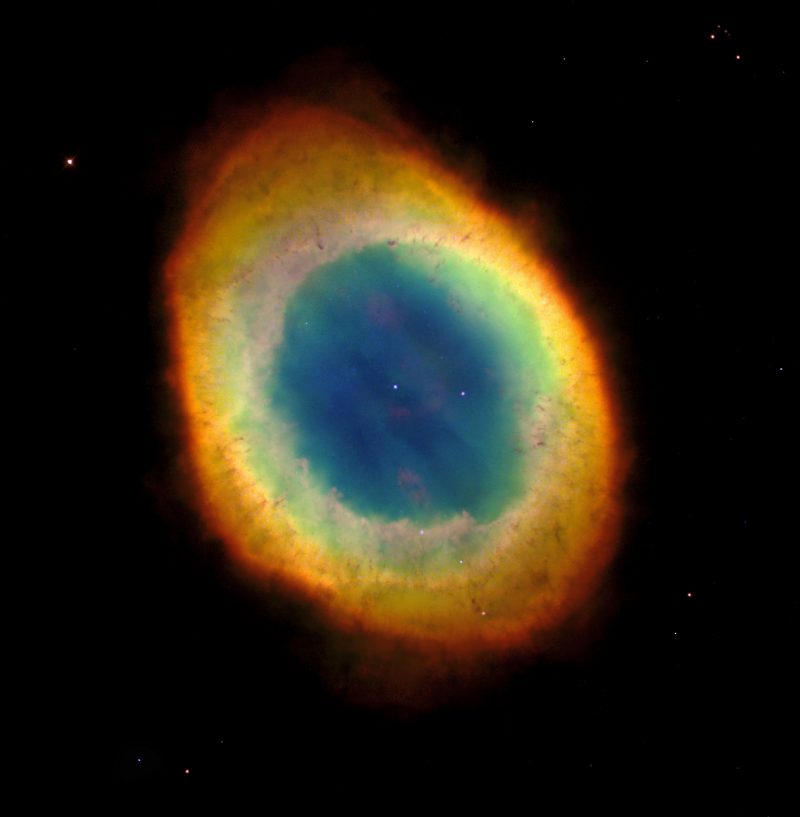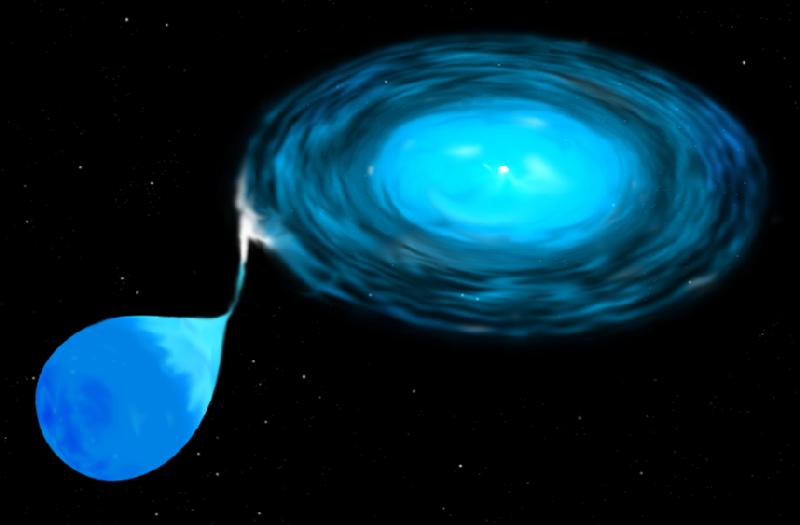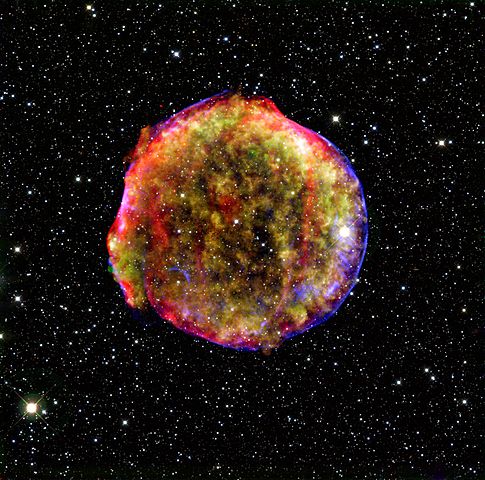
White dwarfs are the hot, dense remnants of long-dead stars. They are stellar cores, left behind when stars exhaust their fuel supplies and blow their gases into space. These objects mark the final stage of evolution for most stars, including our sun. Plus, they play a crucial role in helping us understand the evolution of the universe.
A single white dwarf contains roughly the mass of our sun, but in a volume comparable to Earth. Their small size makes white dwarfs difficult to find. No white dwarfs can be seen with the unaided eye.
The light they generate comes from the slow, steady release of incredible amounts of energy stored up during billions of years as a star’s nuclear powerhouse.
How are white dwarf stars born?
White dwarfs are born when a star shuts down. A star spends most of its life in a balance between gravity and outward gas pressure. The weight of a couple octillion tons of gas pressing down onto the core causes hydrogen nuclei to fuse together, forming helium. This is called nuclear fusion. The steady release of thermonuclear energy from this process prevents the star from collapsing on itself.
But eventually, a star will run out of hydrogen in its center. At this point, it shifts to fusing helium into carbon and oxygen, and hydrogen fusion moves to a shell surrounding the core. The star inflates and becomes a red giant. For most stars – our sun included – this is the beginning of the end. The star expands, stellar winds blow at an increasingly ferocious rate, and its outer layers begin to escape the pull of gravity.
As the red giant star evaporates, it leaves behind its exposed core: a newly born white dwarf.

What are they made of?
A newly born white dwarf consists of helium, carbon, and oxygen nuclei, swimming in a sea of highly energetic electrons. The combined pressure of the electrons holds up the white dwarf, so it doesn’t collapse into an even stranger entity like a neutron star or black hole.
The infant white dwarf is incredibly hot, so it bathes the space around it in ultraviolet light and X-rays. Some of this radiation is intercepted by the gas that the star released when it died. The gas responds by fluorescing with a rainbow of colors, creating a planetary nebula. These nebulae – like the Ring Nebula in the constellation Lyra the Harp – give us a peek into our sun’s future.
The white dwarf now has a long, quiet future ahead of it. As trapped heat trickles out, it slowly cools and dims. Eventually it will become an inert lump of carbon and oxygen floating invisibly in space: a black dwarf. However, the universe isn’t old enough for any black dwarfs to have formed. The white dwarfs born from the earliest generations of stars are still cooling off, 14-billion-years later. So the coolest white dwarfs we know of, with temperatures around 4,000 degrees Celsius (7,000 degrees Fahrenheit), may also be some of the oldest relics in the cosmos.
But not all white dwarfs go quietly
While solitary white dwarfs fade gradually, a white dwarf that orbits another star is highly explosive. It siphons gas from its companion, with hydrogen passing across a gaseous bridge and spilling onto the white dwarf’s surface. And as the hydrogen accumulates, its temperature and density eventually reaches a flash point. The entire shell of newly acquired fuel violently fuses and releases a tremendous amount of energy in a nova. The white dwarf flares briefly with the brilliance of 50,000 to 100,000 suns, and then slowly fades back into obscurity.

Sometimes a white dwarf ends up as supernova
However, if the gas collects fast enough, it can push the white dwarf past a critical point. Then, rather than creating a thin shell of fusion, it brings the star suddenly back to life. Unregulated, the violent release of energy obliterates the stellar core in one of the most energetic events in the universe: a Type 1a supernova. The absolute luminosity of the supernova is 5-billion-times brighter than the sun. For weeks or months, it can outshine even an entire galaxy.

Such brilliance makes Type 1a supernovae visible from across the universe. Astronomers use them as standard candles to measure distances to the farthest reaches of the cosmos. Observations of detonating white dwarfs in distant galaxies led to a Nobel Prize-winning discovery: the expansion of the universe is accelerating. So dead stars have breathed life into our most fundamental assumptions about the nature of time and space.
Bottom line: A white dwarf is the incredibly dense core of a dead star, left behind when the star exhausted its fuel. Our sun will become a white dwarf one day.
The post What are white dwarf stars? How do they form? first appeared on EarthSky.
0 Commentaires